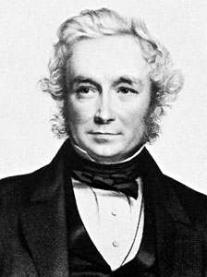Offers thoughts on a specimen, stating they are conjectural and without seeing it he cannot be clearer.

The Correspondence of John Stevens Henslow
John Stevens Henslow (1796–1861) spent his adult life attached to the University of Cambridge. He graduated in mathematics in 1818, then acted as a demonstrator for the Professor of Chemistry, carried out and published papers on field geology, and was a founder of the Cambridge Philosophical Society in 1821. He held two University Chairs: Mineralogy from 1823–27, and Botany from 1825 until his death in 1861.
Henslow was closely involved in University affairs and the introduction of science into the Cambridge Tripos. He was a gifted teacher and pedagogic innovator. His best-known student was Charles Darwin, with whom he maintained a life-long friendship and correspondence. Henslow also acted as the (unofficial) agent for Lord Palmerston, one of the University’s two MPs, in the election of 1826.
In 1823 Henslow was ordained and became curate of Little St Mary’s. He was awarded the living of Cholsey in 1835, and became Rector of Hitcham, near Stowmarket in Suffolk, in 1837. Henslow moved to Hitcham, but continued giving his botany course at Cambridge in May every year until his death. During this time, he attempted to introduce science into agriculture nationally and locally, whilst also taking steps to improve the lives of agricultural labourers. Universal education was a constant concern for him, through the University of London, the Department of Science and Art, regional museums, and his parish school.
Henslow had a network of correspondents across all levels of society, nearly 300 in these surviving letters. The letters he retained until his death are mostly held in the Cambridge University Library, but others have been dispersed around the world. Letters between Henslow and Darwin were published in 1967 (by Nora Barlow) and also in The Correspondence of Charles Darwin (from 1985 onwards).
The Henslow letters have been collected and transcribed by M. E. Edmunds, K. H. Joice, A. L. Jones, D. Kohn, J. G. Murrell and J. S. Parker.